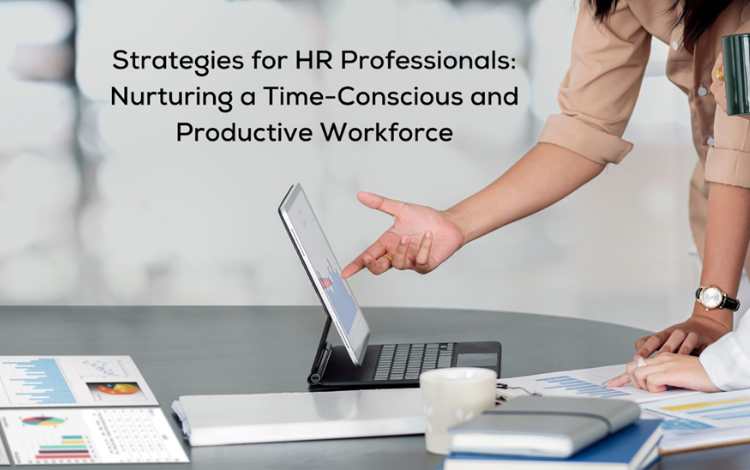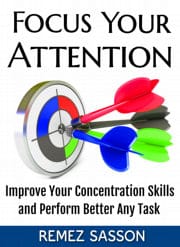
Today’s fast business world needs HR to help organizations use time wisely and productively. As work and workers quickly change, HR should use agile, data-driven practices. This aligns with employee and company goals. It builds an efficient, engaged workforce that makes the most of time.
This article shares practical strategies and ideas to empower HR. The aim is to create a thriving workplace culture that drives productivity. HR can make time an asset, not a constraint.
Leveraging Time-Driven HR Practices
Implementing Agile Workforce Management
Being agile and adaptable gives organizations a big competitive advantage today. Companies that can quickly adapt their workforce planning as business needs change will stay ahead.
Browse our online courses on meditation, positive thinking, overcoming procrastination, confidence, and freedom from distractions.
Leading companies like Unilever, Adobe, and Microsoft have created agile workforces. They use flexible work models, ongoing performance management, and fast skill-building programs. Their data analysis gives real-time insights to optimize workforce decisions.
HR should rethink workforce planning using dynamic quarterly or monthly cycles. This agility lets them adapt based on shifting priorities.
Time-Optimized Recruitment
Balancing speed and quality is key in hiring today. Roles need to be filled quickly but after careful screening.
HR can achieve this by using pre-screening assessments and structured interviews. These tightly evaluate both skills and culture fit. This avoids spending too much time interviewing unsuitable candidates.
AI chatbots and automated skills testing can further streamline screening for high-volume recruiting.
Providing an excellent candidate experience also builds the employer brand. Tools like employee’s salary to hourly calculator help HR efficiently convert salaries to hourly rates for temporary or contract workers. This optimizes time spent on pay planning.
Research shows employees are 17% more productive when they feel recognized as unique individuals.
Real-Time Performance Feedback
The once-a-year performance review is dying out, as it fails to catalyze employee growth and provide timely course correction. HR leaders need to nurture a culture of continuous feedback loops and transparency.
Take Microsoft, Accenture, and Deloitte, for example. They now use things like weekly check-ins and feedback from colleagues to give continuous updates on how well employees are doing. This helps spot gaps and provide support early, leading to tangible productivity gains.
Cultivating a Productivity Mindset
Prioritizing Tasks and Goals
With complex matrix organizations and multi-project workloads, providing clarity on business priorities is essential for channeling focus and effort.
HR professionals need to collaborate with business leaders and managers to cascade enterprise goals into achievable team and individual objectives. This ties employee efforts directly to organizational success.
As per McKinsey, employees with a strong sense of purpose and meaning in their work are up to three times more productive.
Time-Blocking Techniques
While multi-tasking may seem efficient, research shows concentration on one task at a time boosts productivity. HR teams can train managers in time-blocking techniques – setting aside distraction-free time blocks for high-priority work.
For instance, as per studies, time blocking improved productivity in teams by 34% in organizations that adopted it. Employees also report higher job satisfaction as they gain a sense of progress.
Encouraging Work-Life Integration
The lines between work and personal lives are getting increasingly blurred, especially after the remote work shift triggered by the pandemic.
Rather than aspiring for an elusive work-life balance, HR leaders need to promote work-life integration. This involves creating a holistic employee experience revolving around flexibility, health, and well-being.
As evidence shows, the integration approach leads to higher commitment. Employees who feel their company cares about their overall well-being are up to five times more committed to their work.
Proactive Stress Management
Recognizing Burnout Signs
With constant technology pressures today, employee burnout is a big risk. HR should help prevent burnout by training managers to spot warning signs. These include lack of engagement, cynicism, and lower productivity.
Stepping in quickly to address employee challenges is key. This helps restore productivity and engagement. Giving out surveys about burnout risks can help managers spot problems early before they get too serious.
Implementing Mindfulness Practices
Lots of companies are finding that mindfulness and meditation really help. HR leaders can lead the way by introducing easy techniques, like taking short, deep breaths during meetings or having quiet, focused times during the workday.
It’s a simple but powerful way to bring calm and focus to the busy work environment.
Creating a Supportive Work Environment
Psychological safety, trust, empathy, and human connection in the workplace environment have a significant impact on employee performance and well-being.
HR professionals play a central role in shaping workplace culture and need to be intentional about architecting support systems, resources, and spaces that reinforce these elements.
For instance, practices like enabling employees to bring their authentic selves to work, sharing vulnerability stories by leaders, recognizing employees holistically, and proactively checking in on employee morale all foster support.
Strategies in Action
Fostering Supportive Workplace Culture
A positive workplace culture where people feel cared for is key to employees being engaged and doing their best work. HR leaders can help create this type of culture. They can do things like:
- Encourage people to be themselves at work and share their real feelings and experiences.
- Make it normal for people to admit when they’re struggling without feeling embarrassed.
- Offer programs to help employees grow personally as well as professionally.
- Regularly check in on how employees are feeling about their work and the company.
The goal is to build a workplace where people feel comfortable, valued, and empowered to thrive. This leads to more motivated and productive employees.
Balancing Swift Recruitment with Thorough Candidate Screening
HR teams want to fill open jobs quickly. But they also want to make sure they hire quality people who are a good fit. Some ways to do both:
- Use short online tests before interviews to check skills and personality. This screens out unqualified candidates early.
- Use AI tools to test abilities in areas like coding or problem-solving. This gives an objective skills assessment.
- Conduct structured interviews focused on the exact skills and values needed for the role. This reveals if a candidate is truly a fit.
- Avoid too many long interviews with candidates who clearly aren’t a match. This wastes everyone’s time.
The goal is to streamline the process so you can hire good people faster. Initial testing filters out unqualified applicants early on. Targeted interviews deeply assess the best candidates for skills and culture. This achieves speed and quality together.
Role of Technology in Time-Driven HR Practices
New tech tools like AI and automation can handle repetitive HR tasks like recruiting, training enrollments, and surveys. This saves HR staff time so they can focus on more important strategic work. The data these tools collect also helps HR make smarter decisions faster about hiring, performance, and employee engagement.
Promoting Productivity without Overburdening Employees
HR should boost productivity by:
- Motivating employees with meaningful work, not pressure.
- Giving people flexibility and balance, not unreasonable demands.
- Helping employees gain skills, not overburdening them.
- Setting clear goals linked to purpose, not unrealistic stretch targets.
This creates engaged, energized employees who drive results through high productivity. Overwork and constant pressure lead to burnout and worse performance. The key is employee empowerment, not excessive demands.
Frequently Asked Questions
How can HR balance swift recruitment with thorough candidate screening?
Pre-screening assessments, AI-enabled skills testing, and structured interviews help balance speed and quality in recruitment. Screening tightly for skills, culture fit, and mindset early in the process avoids over-investing time in unsuitable candidates.
What role does technology play in enabling time-focused HR practices?
Digital tools like AI, analytics, automation, and collaborative platforms help optimize repetitive tasks involved in processes like recruitment, performance management, and learning.
This provides HR professionals time to focus on more strategic priorities while leveraging data-driven insights to enhance the speed and quality of decision-making.
How can HR promote greater productivity without overburdening employees?
Focus on fostering intrinsic motivation by providing clarity of purpose, autonomy, and upskilling opportunities. Offer work-life integration, flexibility, and holistic well-being programs. Set realistic expectations and proactively assess workload capacities.
Productivity stems from engagement, not excessive stretch goals and pressure.
Conclusion
Human resources (HR) professionals have the opportunity to use data, empathy, and agility to create a workforce that is ready for the future. HR leaders can create a culture of engagement, resilience, and growth by implementing practices that prioritize productivity throughout the employee lifecycle.
While the business landscape is constantly changing, HR can use human-centricity, transparency, collaboration, and purpose-alignment to create thriving workplaces that lead organizations successfully into the future.
This can involve automating simple HR processes, measuring productivity, and developing strong analytical skills to extract insights from data. By doing so, HR can transform the industry and shape the employee experience in meaningful ways.

